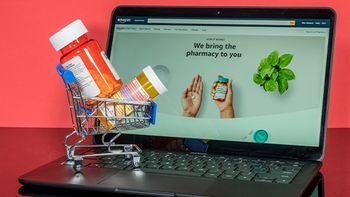
- Pharmaceutical Commerce - January/February 2016
Pharma logistics--so what?
Looking at the essential value of well-managed supply chains
At Pharmaceutical Commerce, we spent a good bit of time from late autumn into the first few weeks of this year preparing our feature article on
So, lots of supply chain stuff. Relative to what recent media headlines have been about (drug pricing, multibillion-dollar M&A, “moonshots” to cure cancer…) supply chain issues would seem to be a relatively low-level activity in the life sciences industry. Our contention is: that’s a problem.
Over years of attending industry conferences, on topics ranging from new research to regulatory enforcement of marketing activities, from sales-force automation to contract manufacturing (and so many more), we hear the constant refrain of two things: why can’t the pharma and biotech industry be more like consumer-goods marketing and retailing; and why does drug distribution have to be so complex and (seemingly) costly?
On the first point, the comparison used to be made with Walmart, back in the day when its tightly interconnected inventory and stocking systems were the marvel of the retailing industry; the received lore was that data on a consumer buying a tube of toothpaste in one store would rocket through the system, resulting in the production of more paste at a distant factory. That system is still in place, but these days people like to talk about the “Amazon effect” on retailing, with e-commerce, and overnight and even immediate delivery of orders. There’s still a lot of time lags in the overall pharma supply chain (various studies in recent years estimate that the time from a raw material creation to a delivered, finished good in life sciences is more than one year); however: there’s a pronounced trend in specialty pharmaceuticals to make personalized dosages of drugs available either on the spot, or within 24 hours; some suppliers are employing storage systems on-site at clinics and even patients’ homes; and a few efforts have been made to mimic the drone-based delivery that Amazon is touting.
On the second point, of over-complexity, the overall biopharma industry is rapidly being transformed between generics, which are increasingly being handled by multinational wholesale-distribution firms, and specialty products, whose distribution ranges from those same wholesaler-distributors to a variety of direct-to-patient channels. (Generic usage represents roughly 90% of all prescriptions; but branded pharma products represent more than 80% of the revenue of the industry.) Generics distribution is becoming radically simplified (the most telling example of this I can think of is an effort to provide prescriptions via ATM-like machines, with products popping out like so many candy bars or cans of soda). Mail-order delivery and the tens of thousands of brick-and-mortar pharmacies add to the convenience, speed and efficiency of delivery.
In the specialty arena, however, in addition to the complexity of such drugs as infusions, with dosages tailored to the individual patient’s physiology, far-sighted planners are preparing for how the very latest immunotherapies, based in part of patient’s own cells or genetic profile, will be delivered. Some of this is going on already with stem cell-based therapies; more is coming. These “supply chains” (if the term is even appropriate) will be even more complex that what is occurring today. A near-exact parallel to the commercial distribution of specialty drugs is occurring in the clinical trials world, with similar drivers for personalization and patient-centered treatment.
So, on the one hand, the industry has modernized its supply chain practices, and is a lot more efficient than it used to be, or more than most people realize. On the other hand, the therapies in laboratories today will eventually enter the marketplace and represent a new set of challenges. Service providers to the industry are responding, but there’s a lot more work to be done. These supply chain issues have a direct influence on many other parts of the industry: market access, reimbursement, regulatory compliance, clinical trials development and practice, and data collection and analysis. Pharmaceutical Commerce will be covering these topics closely in future issues.
Articles in this issue
almost 10 years ago
Managing logistics partnerships in uncertain timesalmost 10 years ago
Vaccines manufacturers wrestle with public health policyalmost 10 years ago
The impact of the anti-vaccination lobbyalmost 10 years ago
Logistics providers confront a complex, global healthcare marketalmost 10 years ago
Digitized stress analysis improves blister performancealmost 10 years ago
Enterprise solutions for cold chain managementalmost 10 years ago
Industry hit a record low number of FDA OPDP actions in 2015almost 10 years ago
Collaboration key to a healthy supply chain in 2016Newsletter
Stay ahead in the life sciences industry with Pharmaceutical Commerce, the latest news, trends, and strategies in drug distribution, commercialization, and market access.




